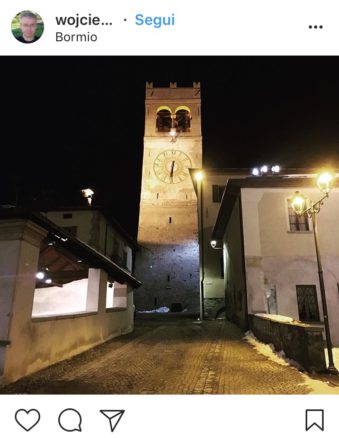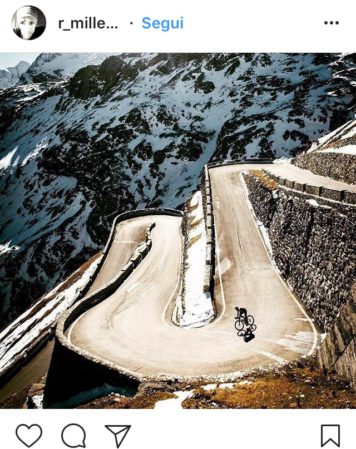Instaborghi: Bormio, Italy, the flagship of Valtellina
“One of the most beautiful villages in Lombardy, Bormio is the next one up in the week of Instaborghi, to take the deserved relaxation between spas, breathtaking views and medieval legends”
Today Instaborghi (click here for the previous editions) takes you straight to Paradise, also known as Bormio (tourist site), a village that has the good fortune to find itself in a sort of natural amphitheater between the valleys in the center of the Lombard Alps.
With its mild climate and uncontaminated landscapes, in Bormio the mountain is beautiful 365 days a year, where you can practise classic winter skiing or, in other seasons, you can go hiking – on foot or by bike. What you just can’t do without, however, will be the spa. Bormio has always had a crucial position in the trade routes between north and south of Europe, and thus has always enjoyed a good wealth, which can be seen from the churches and buildings located along the streets of the historic center.
What to see in Bormio, Italy
The historic center of Bormio is the gem of the Alta Valtellina and attracts tourists from all over northern Italy and from the neighbouring areas of Europe. Via Roma, the main road, runs along the cobblestones and immediately crosses the Church of the Holy Spirit (11th century), one of the oldest in the area. Deconsecrated, made barn and then abandoned, it was bought by the Municipality and renovated. The square of Kuerc (from the dialect, it means ‘lid’) is the symbol of the village, where meetings were held and sentences and decrees were posted. Walking, you will notice gargoyles shaped like a dragon protrude from the roofs, a typical symbol of the area. The Bajona tower, behind the square, guarded the bell whose tolls served to convene popular meetings, parties, as well as to sound the alarm in case of calamity. According to a legend, it was made to play so long when the Visconti troops invaded the country, that it eventually fell from the tower, shattering into a thousand pieces. Up until 1300 the Ponte di Combo was the only entrance to Bormio and also had its customs: restored in 1771, it has maintained its original structure. Then there is the Church of Sant’Antonio, simple and magnificently adorned with frescoes: it is said that the crucifix kept inside is the work of a shepherd who embellished it using his beard and his hair.
What to do in Bormio, Italy
Ski, walk, go to the spa: Julia Roberts would have probably opted for this version instead of Eat, Pray, Love. You are in the Alps so if you do not jump on the snow, skiing or just rolling around on it, you are crazy. Here is the list of slopes you can go for. You are also very close to the Stelvio Pass, the highest mountain pass in Italy and surely one of the most spectacular roads in the known universe. Travel through it by car, motorbike, bike, as you like, but go there. The spas are also very charming, being natural parks in the heart of the Alps. Routes of all kinds await you in various structures, from classic thermal baths to emotional baths, from flavoured water to the mountain-view pools. You can find more info Here.
What to eat in Bormio, Italy
Full-flegged Valtellina: polenta (of course), first quality bresaola, cheeses and traditional dishes such as pizzoccheri, a dish of humble origins but to die for, made with buckwheat flour, cabbage of the garden and mountain butter, delicious in all seasons and the first dish of excellence in the area. The bisciola is a typical Valtellina dessert, a sort of substitute for panettone, which in fact contains raisins and butter, with more pine nuts, walnuts and figs: it was particularly loved by Napoleon!
A little curiosity
A legend says that anyone who arrived in Bormio in the Middle Ages, remained totally enchanted by the architecture of the village, which at the time seemed to have 32 towers and huge sentinels to protect the place. There are no documents that prove the existence of these towers, but this story could have a good foundation, since at that time Bormio was very rich and the towers could symbolize the power of the families which owned the place; it was not unusual at the time that wealthy families lived in houses that looked more like fortresses, surrounded by towering towers.
Carolina Attanasio








